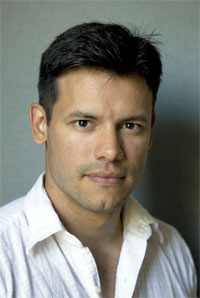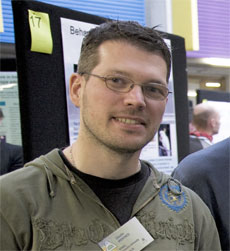GEMOC participants
GEMOC is based at Macquarie University (in the Department of Earth and Planetary Sciences).
There is active national collaboration with state Geological Surveys, GA (Geoscience Australia), CSIRO, ANU/RSES and other national universities, and several major industry collaborators, across a broad range of projects related to GEMOC’s strategic goals. A distinctive feature of GEMOC is the high level of active international collaborations and reciprocal links.
Collaborative research, teaching and technology development links have been established with universities nationally and internationally and these evolve as new alliances become relevant to new directions.
GEMOC has developed ongoing collaborative relationships with national and international industry and end-users such as Geological Surveys globally (e.g. some Australian states, Canada, Norway).
GEMOC has a wide network of international research and teaching development partners and collaborators.
A full list of GEMOC participants and their affiliations is given in Appendices 1 and 3 and at www.es.mq.edu.au/GEMOC/
CHANGES IN 2008
2008 Arivals and Appointments in the EaPE CoRE
Dr Juan Carlos Afonso
Dr Juan Carlos Afonso accepted his offer of a position at GEMOC in the Department of Earth and Planetary Sciences in mid 2008. After graduating with a PhD from Carleton University (Ottawa), he undertook postdoctoral research at the Institute of Earth Sciences Jaume Almera (CSIC, Barcelona) on the development of new methods to study the thermal and compositional structures of the lithospheric/sublithospheric upper mantle. His background is in theoretical and computational geophysics/geodynamics. His current research integrates different disciplines such as mineral physics, potential field modelling, thermodynamics, and physics of the mantle in general, to explore and improve our understanding of plate tectonics. In particular, he is interested in the evolution of the lithospheric mantle, the mechanical and geochemical interactions between tectonic plates and the sublithospheric mantle, and their effects on small- and large-scale tectonic processes.

Dr Bruce Schaefer
Dr Bruce Schaefer moved from Monash University to start his position at GEMOC in the Department of Earth and Planetary Sciences in September, 2008. Bruce has research interests centred around understanding geodynamic processes through the application of isotope geochemistry. In recent times this has involved the application of Os isotopes to investigation of the large scale Earth, including the convecting Earth, core-mantle interaction and the growth and stabilisation of continents and their underlying lithospheric mantle. More specialised applications have included investigation of Precambrian organic rich sedimentary systems, the “Snowball Earth” and extraterrestrial studies; in addition to investigation of Proterozoic terranes by conventional isotopes. He will be continuing to develop Os isotope capabilities at Macquarie in order to expand the range of problems able to be addressed by such techniques.

Professor Simon Turner
Professor Simon Turner transitioned during 2008 to Professor in the EAPE CoRE following his Federation Fellowship. Forefront in a range of research interests is the use of uranium series isotopes to constrain the time scales of magmatic and erosional processes. These can be used to assess the physical mechanisms of melt formation, transport, differentiation and degassing within the Earth. Other research interests include orogenic and post-orogenic granite petrogenesis, sediment provenance, crustal growth, continental flood basalts, potassic lavas associated with high plateau formation, ocean island basalts and island arc lavas.

Other new arrivals and appointments in 2008
Dr Tony Dosseto was awarded an independent Macquarie University Research Fellowship after 4 years as a Research Associate at GEMOC. Tony’s research during 2008 focussed on surface processes through application of U-series isotopic analysis. These included: catchment erosion response to climate change over the last glacial cycle and investigation of how the landscape responds/adapts to climate change; combined use of uranium-series and cosmogenic isotopes to study the controls on the evolution of weathering profiles and soil resources; and studies of small and large catchments under various climates to understand how fast sediments are produced, stored and exported.

Dr Claudio Marchesi joined GEMOC in January 2008 with a 1-year fellowship from the University of Granada. He was subsequently awarded a Marie Curie Fellowship (2009-2010) that will be jointly held at Montpellier and Macquarie Universities. During 2008 his research focussed on the nature of the exposed lithospheric mantle in the Ronda Massif, southern Spain (see Research Highlight). The Ronda Massif is a peridotite-pyroxenite complex that provides a unique natural laboratory to study the interaction of mafic melts with ultramafic wall rocks. These mantle-derived rocks, now thrust onto the Earth’s surface, reveal a sharp melt-infiltration interface that has been frozen in a domain containing both peridotite and garnet pyroxenite. This potentially provides the key to identifying how different elements behave during partial melting of a heterogeneous mantle region, and the length-scales of their homogenisation and/or decoupling during melting.
Dr Justin Payne started his position as geochemist at GEMOC in the Department of Earth and Planetary Sciences in April 2008. He graduated from the University of Adelaide in 2008 with a PhD that explored the tectonic evolution of the Gawler Craton and broader Mawson Continent during the late Archaean and early Proterozoic. His research uses geochemistry, isotope geochemistry and geochronology to understand mechanisms of crustal growth and recycling with emphasis placed upon global tectonic regimes of the early Proterozoic. He has extensive experience with laser-ablation inductively coupled
mass-spectrometer analysis.

 GEMOC ARC National Key Centre
GEMOC ARC National Key Centre